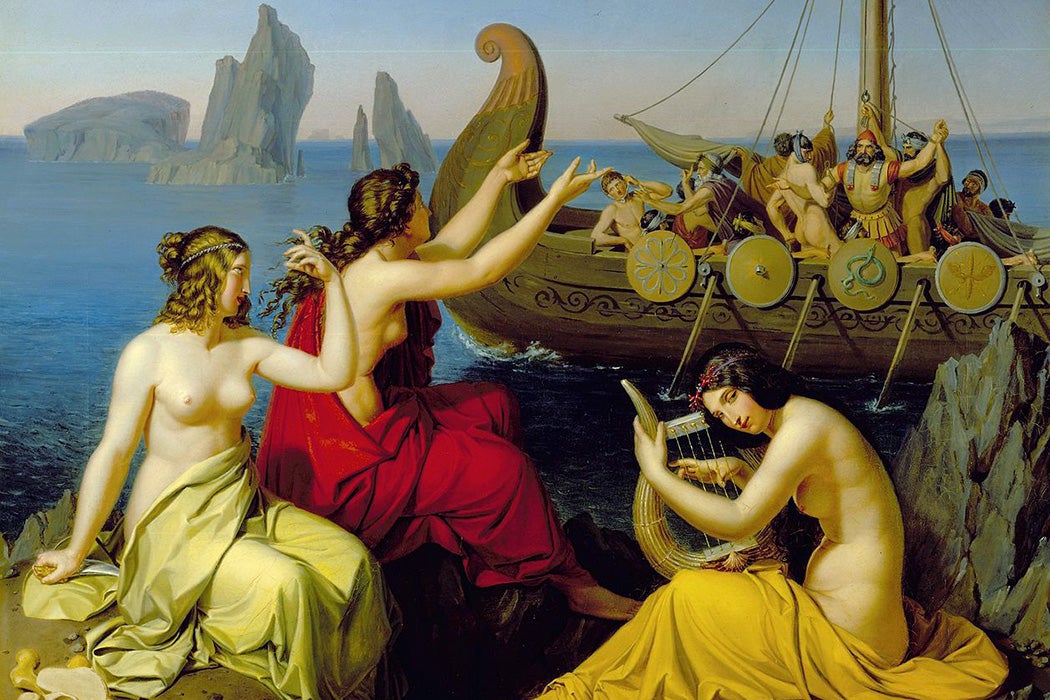Discover Siren Eyes: it’s the viral TikTok beauty trend showcasing an elongated, black-winged eyeliner that promises to transform its wearer into a veritable seductress. The trend and its name, credited to beauty influencer Danielle Marcan, references the sirens, ancient mythological creatures know for their powers of allure through voice and song. But how did we get from figures imagined in millenia-old narratives to the modern reconceptualization, which connects the siren with beauty and identity constructions of young women online?
Let’s start at Homer’s Odyssey, one of the best-known sources of siren mythology. Odysseus, the hero of the far-ranging epic, escapes the call of sirens by being tied to the mast of his ship; no matter how strong the siren call, he can’t chase it. His crew, in the meantime, plug their ears with wax to block out the “magic song.”
On the sirens’ appearance, Homer is vague. In his essay on the folkloric context of the Homeric sirens, classicist Gerald K. Gresseth considers whether they look like “anthropomorphic maidens” or soul-bird creatures. Opinions divide between the two camps. “But the main piece of evidence used to support the case for anthropomorphic Sirens,” he points out, “is the fact that Homer does not say that they had bird forms of any kind. Actually Homer doesn’t say anything on this matter either way.”
Classical Greek pottery may have depicted sirens as both male and female bird-creatures with human heads. In the 3rd century BCE, Apollonius of Rhodes suggested in his Argonautica that sirens are part woman, part fish, an image that became more prevalent in medieval Europe. “The shift of meaning–from ‘part woman, part bird’ to ‘half woman, half fish’ is sometimes explained as being due to uniting the classical myth of the sirens with the Teutonic and Northern superstition of the mermaid,” notes classicist Wilfred P. Mustard.
Weekly Newsletter
Today, sirens are portrayed almost exclusively as female. Increasingly eroticized as their femaleness and femininity was concretized, and with the enduring motif of the fatally bewitching “magic song,” an image of the siren emerged as “a kind of succuba,” notes Gresseth. It’s not too far a leap from the reconsideration of the monstrous feminine and the reclamation and redemption of the femme fatale to the parts of the internet that hold up the image of the siren as a mascot, encouraging women to tap into a “dark feminine energy” to achieve anything from the seduction of men to higher self-esteem, using not a “magic song,” but everything from body language to cosmetics.
In a study on the consumption of cosmetics by young women, scholar of consumer sciences Nancy Ann Rudd writes that the act of using make-up gives its users the chance to “enhance personal identity construction,” resulting in a “psychosocial transformation.” The wearer feels they can “exert power to overcome some of the gendered social disadvantage that they have experienced or that they recognize in the culture at large.” Whether seen as sheer fun and fantasy or as containing an underlying insidiousness and promotion of regressive ideas, the connection of the Siren Eyes beauty trend to “Dark Femme” Tiktok might reflect Rudd’s argument that the use of cosmetics can be linked to the “degree to which a woman believes she can control social outcomes by controlling her appearance.”







